Digital Poster
fMRI Analysis: Applications
ISMRM & ISMRT Annual Meeting & Exhibition • 10-15 May 2025 • Honolulu, Hawai'i

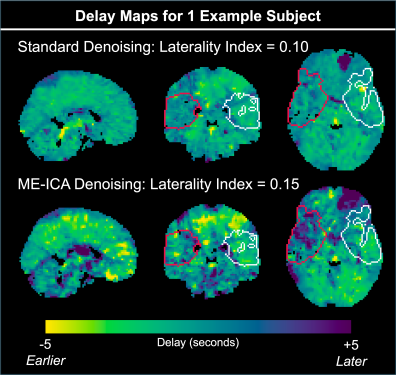 |
Computer Number: 49
1578. Multi-echo
ICA improves the sensitivity of BOLD fMRI blood flow delay
estimates in subacute stroke
R. Clements, M. Montero, S. Urday, J. Grafman, R. Harvey, M.
Bright, C. Ingo
Northwestern University, Evanston, United States
Impact: ME-ICA increases the sensitivity of BOLD delay
estimates to changes in cerebral blood flow for moderately
severe sub-acute stroke participants. Ultimately, this work
will allow for noninvasive assessment of cerebral blood flow
changes with reduced participant attrition due to motion.
|
|
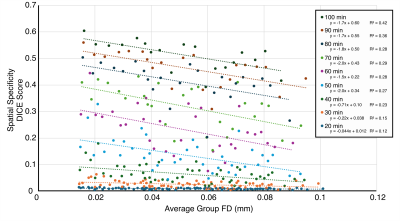 |
Computer Number: 50
1579. Characterizing
Motion-Related Contamination of Group Independent Component
Analysis Networks in Resting State fMRI
S. Laxer, A. Eed, M. Bellyou, P. Zeman, K. Gilbert, R. Menon
Western University, London, Canada
Impact: This contribution informs researchers who want
to perform power calculations or group-level analyses
following dual regression of network components with a
methodology to approximate the quantity of data necessary to
achieve quality results given an estimate of the motion
levels.
|
|
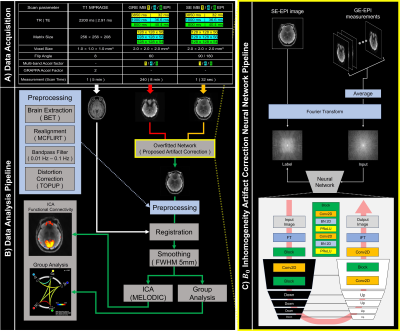 |
Computer Number: 51
1580. Correction
of Resting-State fMRI Data Contaminated by B0 Inhomogeneity
Artifacts Using a Single-Subject Fitting Neural Network
D. Kim, S. Lee, K. Jung, S. Seo, H-J Song, D-H Kim
Yonsei University, Seoul, Korea, Republic of
Impact: B0 field inhomogeneity induced artifacts were
mitigated by proposed frequency-domain deconvolutional
neural network. The proposed method is expected to broaden
the detectable range of brain regions, particularly in areas
heavily affected by B0 inhomogeneity, enabling more
comprehensive whole-brain fMRI research.
|
|
 |
Computer Number: 52
1581. Sensitivity,
Specificity and Test-Retest Reliability Comparison of a Novel
Real-Time and four Offline Resting-State fMRI Analysis Pipelines
L. Dowdle, J. Zhang, C. Tatsuoka, O. Myers, K. Rosenberg, J.
Dilts, E. Yacoub, S. Posse
Maastricht University, Maastricht, Netherlands
Impact: This study emphasizes the need to further
standardize rsfMRI analysis pipelines. It also shows that
real-time rsfMRI analysis now approaches the sensitivity,
specificity and test-retest reliability of state-of-the-art
offline analysis pipelines.
|
|
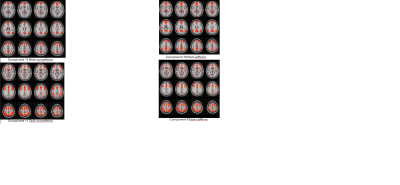 |
Computer Number: 53
1582. Group-Level
fMRI Analysis of Caffeine Effects: Data-Driven and
Connectivity-Based Approaches
C. Karakuzu, K. Eren, E. Can, B. Tavashi, K. Yıldırım, L.
Alqam, A. Dincer, P. Ozbay
Bogazici University, Istanbul, Turkey
Impact: This study sheds light on how caffeine modulates
brain networks, influencing both cognitive task performance
and resting-state connectivity. These findings could help
refine understanding of caffeine's neurophysiological
effects and improve interpretations of brain activity in
cognitive and physiological states.
|
|
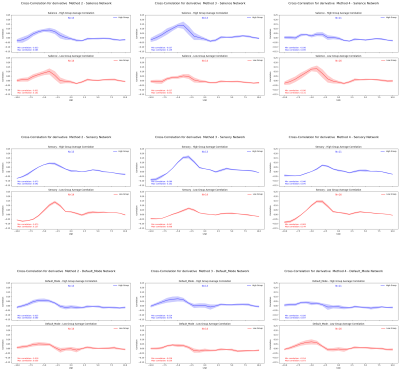 |
Computer Number: 54
1583. Exploring
Pupil-Brain Dynamics Across Different Grouping Methods in
Resting-State fMRI
B. Öner, E. Can, P. Özbay
Boğaziçi University , Istanbul, Turkey
Impact: This study highlights pupil size variation as a
potential indicator of neural dynamics associated with
cognitive states like arousal. It emphasizes the influence
of categorization methods on brain-pupil correlations,
offering insights for both clinical and research
applications.
|
|
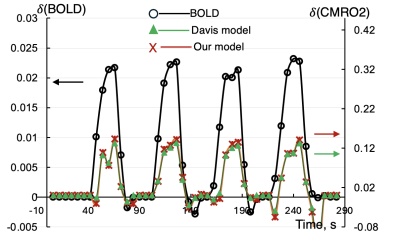 |
Computer Number: 55
1584. A
Novel Model for Dynamic Quantification of Oxygen Metabolism of
Visual Stimulation at 3T
L. Li, N. Blockley, A. Derbyshire, G. Chen
National Institutes of Health, Bethesda, United States
Impact: The reconciliation of YH and Davis models
enhances our ability to interpret fMRI data and assess brain
function accurately. Understanding their relationship is
vital for dynamically quantifying brain oxygen metabolism.
|
|
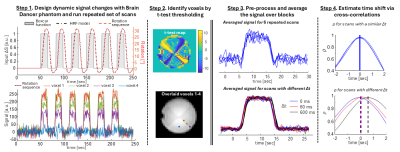 |
Computer Number: 56
1585. Hemodynamic
variability is detrimental in estimating the effective temporal
resolution in a task-based fMRI - a phantom study
G. Baz, R. Schmidt
Weizmann institute of science, Rehovot, Israel
Impact: This work shows a new tool to investigate the
attainable effective temporal resolution of a particular
fMRI experiment, demonstrating the effect of the variability
in the fMRI response due to neurovascular and physiological
variability.
|
|
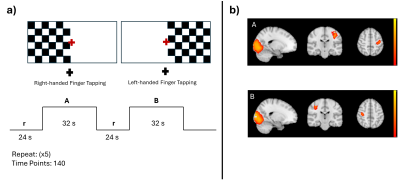 |
Computer Number: 57
1586. Evaluation
of Time-Course-Matched PCA Denoising Techniques in Perfusion
fMRI
A. Dolby, J. Fisher, H-S Liu, J. Lee, N-k Chen
The University of Arizona, Tucson, United States
Impact: Post-processing techniques, such as our PCA
denoising, may mitigate the low SNR of ASL. Increased
activation detection may allow studies to use more complex
fMRI paradigms or reduce scan time for patient populations.
|
|
 |
Computer Number: 58
1587. Voxel-wise
Brain State Prediction Using Swin Transformer
Y. Sun, Q. Wen, T. Liu, F. Calamante, J. Lv
University of Sydney, Sydney, Australia
Impact: This work provides critical insights into the
temporal organization of the human brain in healthy
individuals, showing the potential of swin transformer in
predicting brain states on the voxel level, which may reduce
the fMRI scan time in the future.
|
|
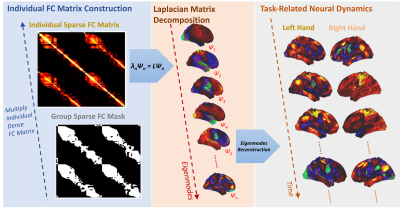 |
Computer Number: 59
1588. Capturing
Task-evoked Brain Dynamics Based on Eigenmode Reconstruction
R. Xie, Z. Zu, M. Wu, Y. Chen, X. Zhang, L. Li, Y. Gao, Z.
Ding, J. Gore, S. Lui, Y. Zhao
Department of Radiology and Huaxi MR Research Center (HMRRC), West China Hospital, Sichuan University, Chengdu, China
Impact: Our approach enables the capture of
individualized, task-evoked brain activation patterns,
offering potential advancements in personalized diagnostics
and interventions for mental health conditions by
identifying unique neural activity signatures and temporal
dynamics in task engagement.
|
|
 |
Computer Number: 60
1589. Examining
reliability of swallowing activation with Partial Least Squares
and SimulScan
A. Bosshardt, C-H Peng, Z. Liu, G. Malandraki, B. Sutton
University of Illinois Urbana Champaign, Urbana, United States
Impact: Partial least squares analysis of SimulScan data
can reliably identify latent variables that capture the
fundamental brain function of swallowing. This approach will
enable the in-depth study of the healthy and disordered
swallowing mechanism in age and disease.
|
|
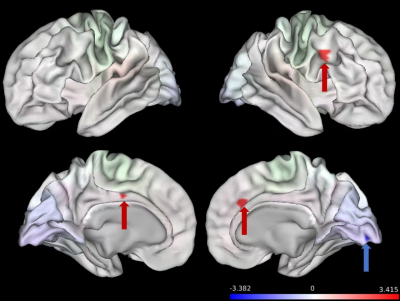 |
Computer Number: 61
1590. Surface-based
Analyses Indicate Distinct Cortical Thickness and Functional
Alterations in Parkinson's Disease Accompanied by RBD
L. Zeng, Q. Zeng, L. Chen, X. Luo, J. Li, B. Xu
Peking University Shenzhen Hospital, Shenzhen, China
Impact: Surface-based morphometry reveals partially
significant differences in brain structure and function
between PD individuals with and without RBD. This analysis
provides remarkable imaging evidence supporting the
specificity of PD with probable RBD.
|
|
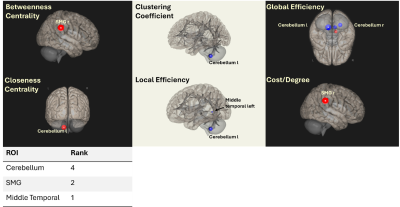 |
Computer Number: 62
1591. Exploring
Neural Alterations in Patients with Tumor-related Language
Deficits using Graph Theory Measures; a resting-state fMRI study
S. Naghizadehkashani, M. Alizadeh, K. Talekar, D. Middleton,
Z. Sadeghi Adl, O. Shoraka, S. Darabi Monadi, S. Tammiraju,
S. Faro, F. Mohamed
Thomas Jefferson University, philadelphia, United States
Impact: Our results suggest that regions beyond
traditional language-eloquent areas may help preserve
language-related connections and compensate for
tumor-related language impairments. Using more advanced fMRI
analysis techniques could positively impact pre-surgical
planning for these patients.
|
|
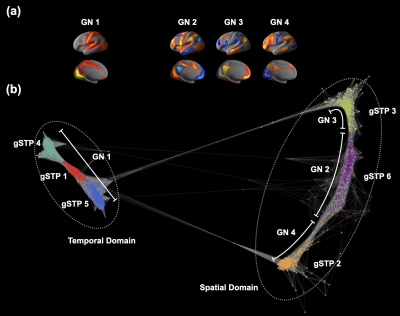 |
Computer Number: 63
1592. Decoding
Brain’s Global Spatiotemporal Dynamics using a scalable k-means
clustering method
Y. Ma, Z. Zhou, X. Chen, H. Zheng, T. Neuberger, J.
Zimmermann, G. Adriany, K. Ugurbil, W. Chen
University of Minnesota, Minneapolis, United States
Impact: We demonstrate the power of our large data
clustering method on high-resolution fMRI data. Six global
spatiotemporal patterns are obtained, showing that our
method allows for the joint estimation of linked spatial or
temporal patterns in one forward step.
|
|
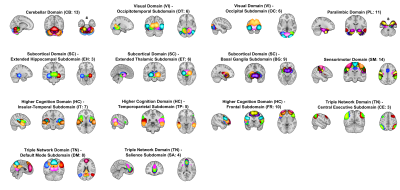 |
Computer Number: 64
1593. A
Highly Replicable Multi-Scale Whole-Brain Atlas of Canonical
Functional Networks from Over 100,000 Resting-State fMRI
Datasets
K. Jensen, V. Calhoun, A. Iraji
Georgia State University, Atlanta, United States
Impact: There are many atlases in the field, however,
this one is highly replicable across individuals, datasets,
and studies, and the multi-scale approach offers great
promise towards helping to standardize both terminology and
methodology in the field of neuroscience.
|
The International Society for Magnetic Resonance in Medicine is accredited by the Accreditation Council for Continuing Medical Education to provide continuing medical education for physicians.